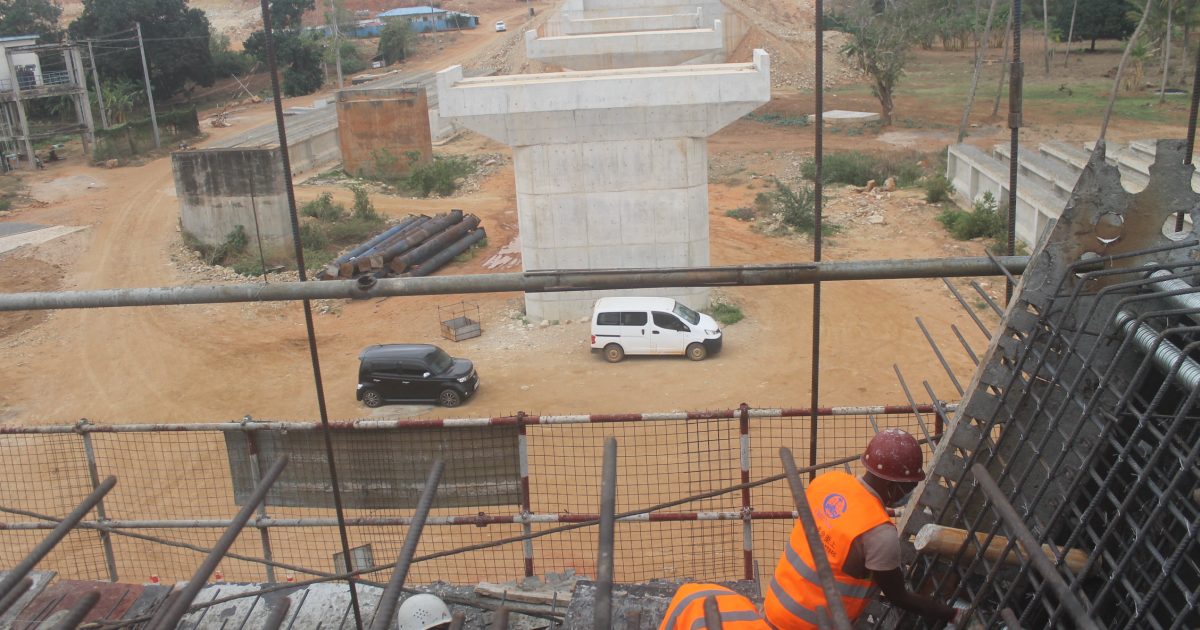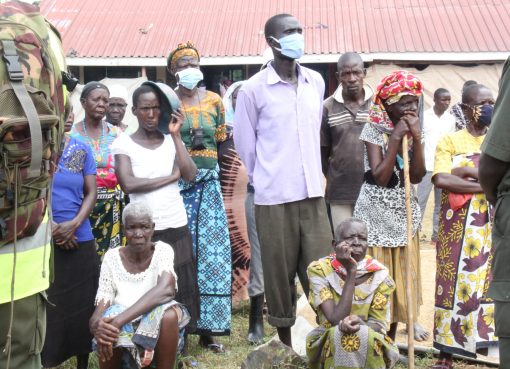Langobaya and Baricho trading centres in Malindi and Magarini Sub Counties of Kilifi County are just about three kilometres apart.
However, a motorist wishing to reach either of the trading centres from the other side will have to travel for at least 120 kilometres in almost three hours.

Residents have for decades had to cross to either village using dug-out canoes or wade through the River Galana (Sabaki) when the water levels are low, but this is risky as the river is infested with crocodiles and hippopotamuses.
But this is set to end by mid-2022 when the 241-meter long Baricho Bridge, which the National Government through the Kenya Rural Roads Authority (KeRRA) is constructing across the river, is expected to be completed.
The bridge, which is being constructed by the China Number Ten Engineering Group is 70 per cent complete and the contractor assured journalists that it will be ready for use before the set completion date of April, 2022.
The government is spending Sh2.33 billion to construct the bridge and approach roads from the Baolala junction to the bridge (5.33 kilometres) and from the bridge to Baricho village (2.48 kilometres).
When complete, the bridge is expected to ease the transportation of people and goods to various urban centres including Malindi, Kilifi and Mombasa.
And with the government having already completed the construction of the Malindi-Sala Gate road and is currently doing the Marikebuni-Marafa-Baricho road, the transport network in the area is expected to improve and thus open up the area for development.
The bridge and the access roads are also a key transport infrastructure expected to be used to transport agricultural produce when the multi-billion-shilling Galana-Kulalu Food Security Project is completed.
Residents who spoke to reporters at the bridge construction site expressed joy that their perennial agony of risking their lives to cross the river would soon end. They called on the authorities responsible to speed up the works.
They said many people had been killed by crocodiles and hippos whenever they attempted to cross the river and expressed hope that it would no longer be dangerous to cross the river when the bridge is completed.
Manyeso Katana Kamacha said at least five people drowned while crossing the river while others had been attacked by crocodiles and hippos and added that the completion of the bridge would bring relief to residents.
He said it would be easier to transport agricultural produce, especially pineapples, noting that transporters of the produce had suffered a lot while trying to access markets, sentiments shared by Jumwa Charo Menza.
Michael Charo Dume from Langobaya village, who works at the construction site, said the project had created employment for at least 300 locals, who he said had also received skills that they would use long after the completion of the bridge.
Mr. Li Jie Yang, the construction site manager, said had it not been for Covid-19, the project would have been completed. However, many engineers were unable to travel to the country due to restrictions imposed to contain the spread of the virus.
He however said he was certain the project would be completed before April next year since most of the works had already been done.
Mr. Yang said his company had trained local technicians to use the new technology and hoped that the knowledge would be useful to the country long after the project is completed.
When journalists toured the project site, engineers and technicians were busy constructing the central pier of the box gadder bridge, which is being constructed using cantilever construction.
Mario Fonika, one of the engineers at the site said the bridge was being constructed using the cantilever technology and that it was a box girder bridge with a durability rate of 100 years.
Victor Majiwa from Otieno Odongo and Partners Consulting Engineers said the progress of the works was good and that when complete, the project would open up the area for development.
Ms Linah Pola, the contractor’s liaison officer, said the locals were very cooperative to the construction workers and that the relationship between them was very cordial. She also said many locals had benefitted from employment.
Renson Nyoro from the China Number 10 Engineering Group said there was a lot of technology transfer as many local technicians had been trained on the job.
By Emmanuel Masha




